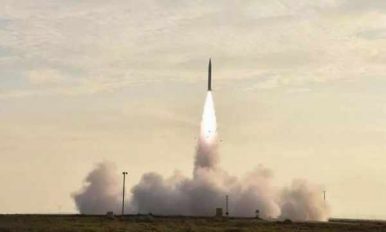By Steven Stashwick
 China Daily, a state-owned English-language tabloid, reported that it was the first Chinese test of a waverider hypersonic craft. The test saw the Starry Sky-2 flying for over 400 seconds and conducting extreme-angle maneuvers at sustained speeds above Mach 5.5. China has reportedly tested hypersonic weapons before, but those were boost-glide vehicles that are lofted to high altitudes by a rocket and then “glide” unpowered to their targets at hypersonic speeds – greater than Mach 5.
China Daily, a state-owned English-language tabloid, reported that it was the first Chinese test of a waverider hypersonic craft. The test saw the Starry Sky-2 flying for over 400 seconds and conducting extreme-angle maneuvers at sustained speeds above Mach 5.5. China has reportedly tested hypersonic weapons before, but those were boost-glide vehicles that are lofted to high altitudes by a rocket and then “glide” unpowered to their targets at hypersonic speeds – greater than Mach 5.
By contrast, waveriding hypersonic craft are powered vehicles. The report states that the Starry Sky-2 was lofted by a conventional booster rocket before separating and engaging its own engine to accelerate to hypersonic speeds. Waverider craft then rely on the shockwaves produced by their own hypersonic flight to provide the vehicles’ lift.
Chinese military analysts told the South China Morning Post that waverider hypersonic weapons could carry nuclear weapons but would most likely be used to carry conventional warheads, as well as other potential military applications. The analysts estimated that the technology was still three to five years away from being weaponized.
The U.S. Air Force has demonstrated its own scramjet-powered waverider hypersonic vehicle. That project, the Boeing-built X-51A, flew for six minutes, about as long as China’s Starry Sky-2 reportedly flew, and reached a top speed of Mach 5. The X-51A’s last test flight was in 2013.
Unlike conventional jet engines that use rotating fan blades to compress air for combustion, scramjets have no moving parts and rely on being boosted to supersonic speeds by a rocket to force air into their compression inlets to sustain combustion. The Chinese reports did not elaborate on what type of propulsion the Starry Sky-2 uses for its powered flight.
Together, China’s boost-glide and waverider test flights suggest that it is pursuing a diverse set of offensive hypersonic capabilities. The Chinese Academy of Sciences is already building what they claim will be the world’s fastest wind tunnel, capable of simulating airspeeds of nearly 35 times the speed of sound, to support research into hypersonic weapons.
Hypersonic weapons’ extraordinary speeds and maneuverability present an even more extraordinary challenge to defend against.
In 2016, the Air Force Studies Board, part of the U.S. National Academy of Science, published a report on the threat posed to U.S. interests by high-speed maneuvering weapons systems. The report highlighted that because hypersonic weapons operate below the normal trajectories of ballistic missiles and above the speeds of non-hypersonic cruise missiles, they exceed the capabilities of the United States’ current missile and air defense systems and infrastructure.
Both Admiral Philip Davidson, the head of U.S. Indo-Pacific Command, and his predecessor, Admiral Harry Harris, have testified before the U.S. Congress about the potential threat posed by China’s hypersonic capabilities and advocated for the United States to develop and field its own.
The U.S. defense budget for 2019 invests research funding into several hypersonic and high-speed projects, including a Tactical Boost Glide system that hopes to deliver an operational prototype by 2023, the jet-propelled Air Breathing Weapon Concept, the U.S. Army’s Operational Fires long-range, precision artillery project, and the Advanced Full Range Engine for future hypersonic vehicles. U.S. defense contractors appear eager to compete for the new funding.
No comments:
Post a Comment